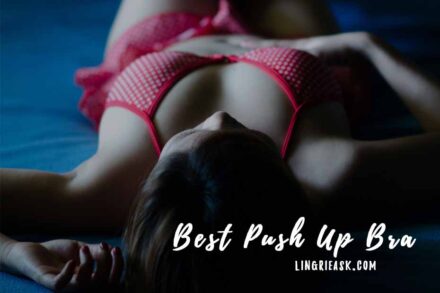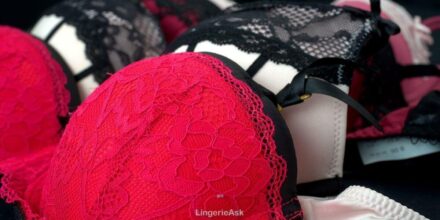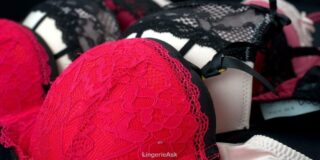Choosing the perfect bra is a journey of discovery. With an ever-expanding universe of styles, fabrics, and technologies, it can be a challenge to find a bra that not only fits well but also offers the specific look and feel you desire. In this landscape, one style has intrigued and puzzled women for decades: the water bra.
Far from a fleeting trend, the water bra has carved out a niche in the lingerie market, offering a distinct alternative to traditional padded and push-up styles.
We will dive deep into its history, technology, benefits, and drawbacks, empowering you with all the knowledge you need to decide if this unique bra is the right fit for you.
Demystifying the Water Bra – A Look Inside
No products found.
Before we explore the benefits and drawbacks, it’s essential to understand what a water bra truly is and how it works.
The Core Technology: What’s Inside the Cups?
A water bra is a type of push-up or padded bra that uses sealed pouches filled with a liquid or gel to create volume and shape. These pouches are embedded directly into the bra’s cups. While the original designs in the 2000s used a mixture of water and mineral oil, most modern versions have transitioned to a denser, more viscous silicone- or gel-based liquid.
The principle is simple but effective: the fluid-filled pouches are typically placed at the bottom and sides of the bra cups. This strategic positioning acts like a liquid cushion, gently pushing breast tissue upward and inward. This results in a fuller, rounder look and a pronounced, natural-looking cleavage. The fluid nature of the filling allows the bra to conform to your body’s movements and contours, creating a more dynamic and personalized fit compared to static foam padding.

The Difference: Water vs. Gel vs. Foam
The terms “water bra” and “gel bra” are often used interchangeably, but there’s a key distinction that matters for both comfort and performance.
- Water-Based Fillings: These are typically lighter and more mobile. They can feel cooler on the skin initially but may shift or “slosh” with movement. The lightness can be a pro for some but a con for others who prefer more stability.
- Gel-Based Fillings: These are the modern standard. The gel is denser and heavier than a water-oil mix. This viscosity prevents the liquid from sloshing and provides a more consistent, solid-like feel. Gel-filled bras are excellent at holding their shape and providing firm support without the rigidity of foam.
- Traditional Foam Padding: This is the most common push-up material. Foam is lightweight, rigid, and provides a fixed shape. While effective at adding volume, it can sometimes create a less natural-looking, “shelf-like” appearance.
Understanding this difference is the first step to making an informed choice. When shopping, look at the product description to see if the bra is described as “gel-filled” or “liquid-filled.”
Who Should Wear a Water Bra?
While the allure of a natural-looking lift is universal, a water bra isn’t the perfect solution for everyone. Here’s a detailed breakdown of who stands to benefit most and who should consider alternatives.
The Perfect Match:
- Individuals with Smaller Busts (AA to B cups): This is the core audience. For those with smaller chests who desire a noticeable but not over-the-top increase in volume, a water bra can be a game-changer. It provides a full, rounded appearance that looks proportional and natural.
- Women Seeking a Natural Silhouette: If you find traditional push-up bras feel too stiff or unnatural, the fluid nature of a water bra is a key advantage. It mimics the body’s natural shape, making it an excellent choice for a smooth, seamless look under clothing.
- For Low-Cut and Plunging Necklines: A water bra’s primary function is to push breast tissue upward and toward the center. This makes it an ideal companion for outfits with deep V-necks, wrap dresses, and low-cut tops where you want to highlight cleavage. The flexible filling ensures no visible lines or gaps.
Who Should Exercise Caution:
- Those with Larger Busts (D+ cups): For women with fuller figures, the added weight of the liquid filling can be a significant drawback. It can place extra strain on the shoulders and back, potentially leading to discomfort. In these sizes, a well-structured bra with minimal padding often provides better support and comfort.
- Individuals Who Are Very Active: The sloshing and movement of the liquid, even in gel-filled versions, can be uncomfortable during high-impact activities like running, jumping, or intense exercise. For workouts, a sports bra is always the safest and most comfortable choice.
- Anyone with Sensitivity to Weight or Pressure: The concentrated weight of the liquid in the cups may be a concern for those with sensitive shoulders or upper back issues.
The Pros and Cons – A Balanced Perspective
Making a smart buying decision means weighing the good against the bad. Here’s a comprehensive, nuanced look at the advantages and disadvantages of a water bra.
The Advantages:
- Unparalleled Natural Look and Feel: This is the water bra’s greatest strength. The liquid filling moves and shapes with your body, creating a subtle, convincing enhancement that looks like a natural part of your body. It avoids the “shelf-like” appearance that some foam bras can create.
- Smooth and Seamless Appearance: The lack of rigid, pre-molded foam means a water bra can be incredibly smooth under clothing. It’s an excellent choice for tight-fitting or delicate fabrics where you want an invisible finish.
- Dynamic Cleavage Enhancement: The fluid in the cups shifts to fill in gaps and push tissue inward, creating a cohesive and beautifully defined cleavage. This is especially effective in plunge-style bras.
- Soft and Comfortable Pressure: The fluid distributes pressure evenly across the breast tissue, which can feel much softer and more comfortable than the firm, unyielding pressure of some padded bras.
The Disadvantages:
- Increased Weight: There’s no getting around this. A water bra is heavier than a foam bra. While this can feel reassuring for some, it can be a source of discomfort for others, especially during prolonged wear.
- Risk of Leakage: This is the most significant concern for most users. A small tear or a manufacturing defect in the sealed pouch can cause the liquid to leak, which can stain clothing and render the bra useless. This is why proper care is non-negotiable.
- Delicate Care Requirements: Water bras cannot be machine-washed. The intense spin cycle and agitation can damage the sealed pouches, leading to leaks. They require gentle hand-washing, which can be a hassle for those used to machine-washable lingerie.
- Limited Versatility: Due to their weight and delicate nature, water bras are not suitable for all activities. They are best reserved for fashion and special occasions, not for daily, high-activity wear.
A Comprehensive Buying Guide
If you’ve decided a water bra is right for you, it’s crucial to know what to look for when shopping.
The Fit and Sizing Mini-Guide
Getting the right fit is arguably more important with a water bra than with other styles due to its unique filling.
- Check for Spillage: The added volume can cause breast tissue to spill over the top or sides of the cup. This is a clear sign that the cup size is too small. Don’t be afraid to go up one cup size.
- The Gore Must Tack: The center part of the bra, called the gore, should lie flat against your sternum. If it lifts away from your body, the cups are either too small or the band is too loose.
- Sister Sizing: If a bra feels right in the cups but the band is too tight or loose, remember your sister sizes. For example, a 34B has the same cup volume as a 32C or a 36A. This is a helpful tip for finding a perfect fit.
- Do the “Slosh” Test: When trying on a bra, move around a little. A quality gel-filled bra should have minimal to no sloshing sound. A loud “slosh” could indicate a lower-quality product with a thinner liquid.
The Buyer’s Checklist: Quality and Safety
Look for these key indicators of a well-made water bra:
- Double-Sealed Pouches: A sign of a quality bra is a double-sealed or reinforced edge around the liquid pouches to prevent leaks.
- Smooth Pouch Edges: The edges of the pouches inside the cup should be smooth and not irritate your skin.
- Even Fill: Hold the bra up to the light. The liquid or gel inside should be evenly distributed with no large air bubbles.
- Secure Stitching: Check the stitching around the pouches. It should be firm, even, and show no signs of fraying.
Caring for Your Water Bra – The Rules of Lingerie Longevity
Proper care is the single most important factor in extending the life of your water bra.
Step-by-Step Washing Instructions:
- Prepare a Bath: Fill a basin or sink with cool water and a small amount of mild, lingerie-specific detergent. Avoid harsh soaps or fabric softeners.
- Submerge Gently: Place the bra in the water and let it soak for about 10-15 minutes. This allows the detergent to break down oils and sweat without scrubbing.
- Gentle Agitation: Gently swish the bra around in the water. Focus on the band and straps, which collect the most sweat.
- Rinse Thoroughly: Rinse the bra under cool running water until all soap residue is gone.
- Drying: Gently press the water out of the bra. Do not wring or twist it, as this can damage the cups and pouches. Lay it flat on a clean, dry towel and let it air-dry. Never put it in a dryer, which will melt the liquid pouches and ruin the bra.
Storage and Longevity:
- Store Cups Nested: To maintain the shape of the cups, store your water bra with the cups nested inside one another. Avoid folding them in half.
- Keep Away from Heat and Sharp Objects: Never leave your bra in a hot car or near a heat source. Store it away from sharp jewelry or pins that could puncture the pouches.
- Lifespan: With regular use and proper care, a water bra typically lasts anywhere from 6 to 18 months. Once the liquid starts to feel uneven, or you notice any discoloration, it’s a sign it’s time for a replacement.
Water Bra vs. the Alternatives
How do water bras truly stack up against the competition?
Water Bra vs. Foam Push-Up Bra
- Weight & Feel: Water bras are significantly heavier but mold to the body. Foam push-ups are lightweight and hold a fixed shape.
- Look: Water bras provide a natural, rounded fullness. Foam bras can create a more “solid” and sometimes less-than-natural appearance.
- Use Case: Water bras are ideal for low-cut tops. Foam bras are great for everyday wear, t-shirts, and structured outfits.
Water Bra vs. Silicone Inserts (“Cookies”)
- Integration: Water bra liquid is sewn into the cup for a seamless look. Silicone inserts are removable and can be placed in any bra.
- Movement: Water bra fluid moves with the body. Silicone inserts can shift around, creating an uneven look.
- Customization: Inserts allow for customizable placement and can even be used to balance asymmetry. A water bra’s padding is fixed.
Final Thoughts – Making a Confident Choice
The water bra may seem mysterious, but it’s a straightforward piece of lingerie designed for a specific purpose. It is not an all-purpose bra, and it’s not meant to be. It excels at what it does best: providing a beautiful, natural-looking lift and cleavage for those who desire it.
Before you make a purchase, consider your wardrobe, your comfort needs, and the care you are willing to give. If the idea of a soft, conforming fit and a subtle, convincing enhancement appeals to you, a water bra could be the missing piece in your lingerie collection.
No products found.
As we already told you in this article, there is no question of “should” I wear one because there is nobody forcing you! It is fully your choice to wear one or not. You can decide this depending on how you feel and what you want.
We hope this article about What is a Water Bra helped also all your doubts and apprehensions regarding water bras. Happy shopping, and stay strong!








